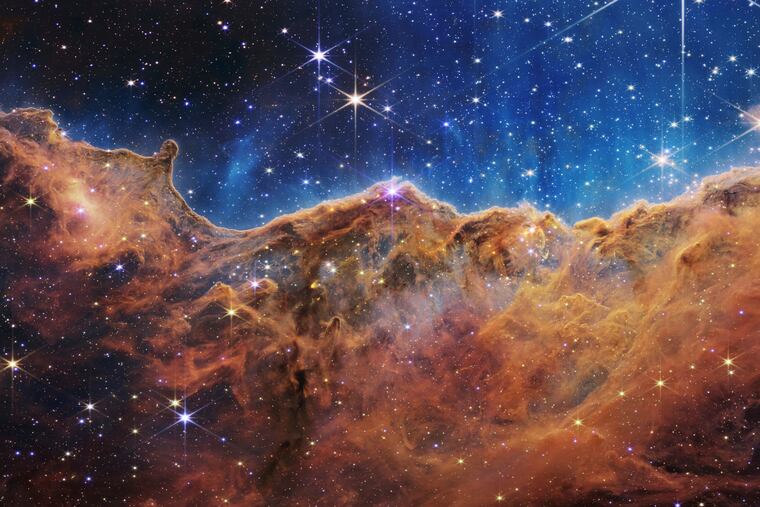NASA’s new telescope shows star death, dancing galaxies
The splendors of the universe glowed in a new batch of images released Tuesday from NASA’s powerful new telescope.

GREENBELT, Md. — A sparkling landscape of baby stars. A foamy blue-and-orange view of a dying star. Five galaxies in a cosmic dance. The splendors of the universe glowed in a new batch of images released Tuesday from NASA’s powerful new telescope.
The unveiling from the $10 billion James Webb Space Telescope began Monday at the White House with a sneak peek of the first shot — a jumble of distant galaxies that went deeper into the cosmos than humanity has ever seen.
Tuesday’s releases showed parts of the universe seen by other telescopes. But Webb’s sheer power, distant location from Earth, and use of the infrared light spectrum showed them in a new light.
“It’s the beauty but also the story,” NASA senior Webb scientist John Mather, a Nobel laureate, said after the reveal. “It’s the story of where did we come from.”
And, he said, the more he looked at the images, the more he became convinced that life exists elsewhere in those thousands of stars and hundreds of galaxies.
» READ MORE: Far out: NASA space telescope’s 1st cosmic view goes deep
With Webb, scientists hope to glimpse light from the first stars and galaxies that formed 13.7 billion years ago, just 100 million years from the universe-creating Big Bang. The telescope also will scan the atmospheres of alien worlds for possible signs of life.
“Every image is a new discovery and each will give humanity a view of the humanity that we’ve never seen before,’’ NASA Administrator Bill Nelson said Tuesday, rhapsodizing over images showing “the formation of stars, devouring black holes.”
“We’ve really changed the understanding of our universe,” said European Space Agency director general Josef Aschbacher.
The European and Canadian space agencies joined NASA in building the telescope, which was launched in December after years of delays and cost overruns. Webb is considered the successor to the highly successful but aging Hubble Space Telescope.
Shown Tuesday:
— Southern Ring nebula, which is sometimes called “eight-burst.” Images show a dying star with a foamy edge of escaping gas. It’s about 2,500 light-years away. A light-year is 5.8 trillion miles.
— Carina nebula, one of the bright stellar nurseries in the sky, about 7,600 light-years away.
— Stephan’s Quinet, five galaxies in a cosmic dance that was first seen 225 years ago in the constellation Pegasus. It includes a black hole that scientists said showed material “swallowed by this sort of cosmic monster.”
— A giant planet called WASP-96b. It’s about the size of Saturn and is 1,150 light-years away. Instead of capturing an image, the telescope used its infrared detectors to look at the chemical composition of the planet’s atmosphere. It showed water vapor in the superhot planet’s atmosphere and even found the chemical spectrum of neon.